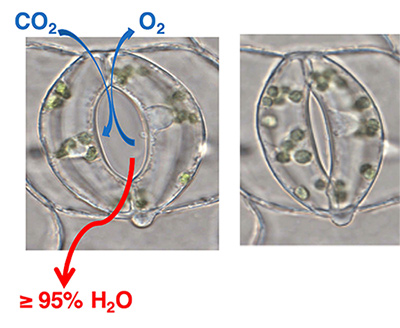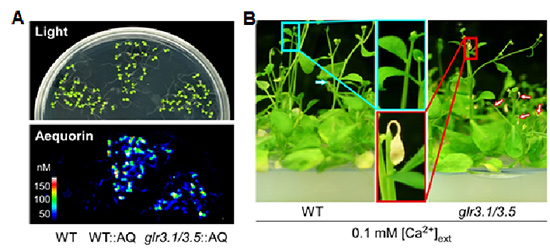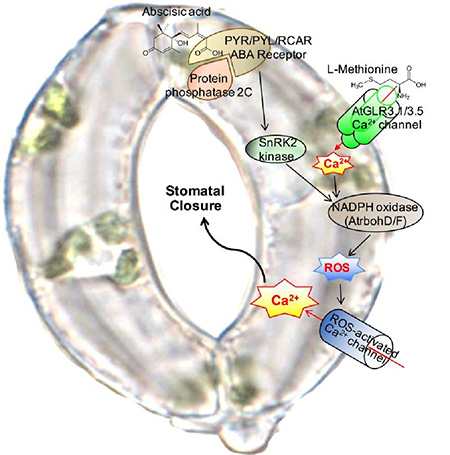주메뉴
- About IBS 연구원소개
-
Research Centers
연구단소개
- Research Outcomes
- Mathematics
- Physics
- Center for Underground Physics
- Center for Theoretical Physics of the Universe (Particle Theory and Cosmology Group)
- Center for Theoretical Physics of the Universe (Cosmology, Gravity and Astroparticle Physics Group)
- Dark Matter Axion Group
- Center for Artificial Low Dimensional Electronic Systems
- Center for Theoretical Physics of Complex Systems
- Center for Quantum Nanoscience
- Center for Exotic Nuclear Studies
- Center for Van der Waals Quantum Solids
- Center for Relativistic Laser Science
- Chemistry
- Life Sciences
- Earth Science
- Interdisciplinary
- Center for Neuroscience Imaging Research (Neuro Technology Group)
- Center for Neuroscience Imaging Research (Cognitive and Computational Neuroscience Group)
- Center for Algorithmic and Robotized Synthesis
- Center for Genome Engineering
- Center for Nanomedicine
- Center for Biomolecular and Cellular Structure
- Center for 2D Quantum Heterostructures
- Center for Quantum Conversion Research
- Institutes
- Korea Virus Research Institute
- News Center 뉴스 센터
- Career 인재초빙
- Living in Korea IBS School-UST
- IBS School 윤리경영


주메뉴
- About IBS
-
Research Centers
- Research Outcomes
- Mathematics
- Physics
- Center for Underground Physics
- Center for Theoretical Physics of the Universe (Particle Theory and Cosmology Group)
- Center for Theoretical Physics of the Universe (Cosmology, Gravity and Astroparticle Physics Group)
- Dark Matter Axion Group
- Center for Artificial Low Dimensional Electronic Systems
- Center for Theoretical Physics of Complex Systems
- Center for Quantum Nanoscience
- Center for Exotic Nuclear Studies
- Center for Van der Waals Quantum Solids
- Center for Relativistic Laser Science
- Chemistry
- Life Sciences
- Earth Science
- Interdisciplinary
- Center for Neuroscience Imaging Research (Neuro Technology Group)
- Center for Neuroscience Imaging Research (Cognitive and Computational Neuroscience Group)
- Center for Algorithmic and Robotized Synthesis
- Center for Genome Engineering
- Center for Nanomedicine
- Center for Biomolecular and Cellular Structure
- Center for 2D Quantum Heterostructures
- Center for Quantum Conversion Research
- Institutes
- Korea Virus Research Institute
- News Center
- Career
- Living in Korea
- IBS School
News Center
An Amino Acid Controls Plants' Breath- IBS plant scientists demonstrate that the amino acid L-methionine activates a calcium-channel regulating the opening and closing of tiny plant pores - Plants breathe and "sweat" through stomata, microscopic pores found on leaves, stems and other plant organs. Through the stomata, plants take up carbon dioxide for photosynthesis and breathe out the products of this process, oxygen and water vapor. Group leader Dr. June M. KWAK and his colleagues at the Center for Plant Aging Research, within the Institute for Basic Science (IBS), identified a novel calcium channel and found out how it regulates stomatal closure. Published in Cell Reports, this discovery helps to clarify how plants maintain and adjust an adequate intracellular calcium level for their growth and breathing.
Calcium deficiency in humans can lead to weak hair, nails, osteoporosis and other serious symptoms, and calcium is essential for plants too. For example, blossom-end rot is a disorder found in tomatoes, watermelons, chili pepper, etc. caused by insufficient calcium in the soil. In plants, calcium contributes to several functions, including growth, differentiation and daily rhythms. IBS scientists focused on the role of calcium in the opening and closing of stomata. They found that calcium concentration inside guard cells, which surround stomata pores, is influenced by proteins called glutamate receptor homologs (GLRs), in particular GLR3.1 and GLR3.5. GLRs got their names because they are structurally similar to animal glutamate receptors, which are activated by the neurotransmitter glutamate and play a role in learning and memory. The team found that GLR3.1 and GLR3.5 form calcium channels in the plasma membrane of guard cells. IBS researchers produced Arabidopsis thaliana plants lacking GLR3.1 and GLR3.5 proteins and found that when grown in a medium with a concentration of calcium 95% lower than the normal soil, these plants have yellow dying inflorescences, similar to the blossom-end rot disorder. "These tips of inflorescence have cells that are rapidly growing and dividing, so they need a lot of calcium. However, plant cells are quite selfish with calcium, and they do not share it with other cells if they do not have enough," explains Kwak. Using aequorin, a protein that senses calcium and emits light of different color depending on the concentration of calcium, IBS scientists found that mutant plants deficient in GLR3.1/GLR3.5 have 25% lower concentrations of intracellular calcium. Then, they used electrophysiological techniques to verify that GLR3.1/GLR3.5 channels are activated by the amino acid L-methionine.
Results from a series of further experiments clarified that L-methionine opens the GLR 3.1/3.5 calcium channels and allows calcium ions to enter the cell. The elevation in intracellular calcium, in turn, activates other membrane channels, like the reactive oxygen species (ROS)-activated calcium channels, leading to stomatal closure. "In the future, we would like to understand the source of L-methionine, which type of cells provide it for the guard cells and in response to what kind of stimuli," explains Kwak.
Notes for editors - References - Media Contact - About the Institute for Basic Science (IBS) Letizia Diamante |
|||
Center for Plant Aging ResearchPublication Repository |
|||
|
|
| Next | |
|---|---|
| before |
- Content Manager
- Public Relations Team : Yim Ji Yeob 042-878-8173
- Last Update 2023-11-28 14:20















